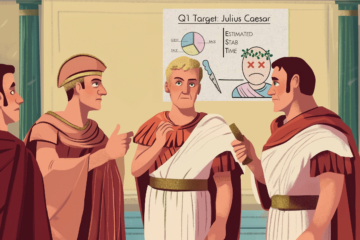
Struggling to get meetings to start on time?
Are your teams frantically running from one meeting to the next, even virtually? You are not alone!
When I became CEO of full-service design and construction management firm, our meeting culture was such that people would start showing up at the top of the hour, but the meeting wouldn’t start until everyone was present, sometimes 10-15 minutes after the posted start time. These meetings ran late, and like a traffic jam on the expressway that delay would propagate through the whole day.
I acknowledged that we had a lot of meetings, and when they ran back-to-back it was very difficult to get from one meeting to the next without being late. As a result, the culture had evolved into one where everyone knew the meeting would start late so they believed it was OK to show up late themselves.
This was not the culture I wanted on my watch, and I was committed to changing it. Here are three things we implemented to get meetings to start on time.
- Create a Buffer between meetings: A buffer is required between meetings to allow for transition and even a trip to the rest room. Scheduling meetings to start and stop on the hour does not allow for this. We implemented a policy of starting meetings 5 minutes after the hour with a goal of concluding them 5 minutes before the hour. Successfully executing this provided a 10-minute buffer between consecutive meetings.
- Start every meeting at the scheduled time, regardless of who is there: It’s worth noting that to get this to stick and improve the culture of late starting meetings we started meetings at 5 after the hour every time. If someone didn’t make it on time, it was painfully obvious and it was their responsibility to discover what they might have missed. That wasn’t an issue for long, as people quickly adapted to the new expectations and were physically able to get there on time. I am also fond of scheduling meeting durations of 45 minutes and 75 minutes respectively. This leaves a little extra buffer should a meeting take a little longer than planned.
- Run a Tight Meeting: Every meeting needs an objective and an agenda. However, even meetings with these things can get off track. Whoever is running the meeting has the responsibility to keep it on track. This means controlling the tangents that are often triggered working through the meeting agenda. When the meeting starts to go off on a tangent the person running the meeting must recognize this and get it back on track. I recommend using an issues log or parking lot to capture the tangential issue and return to the meeting agenda.
There you have it. Three simple (not easy) things you can implement tomorrow to get your meetings to start on time. Happy Meeting!



